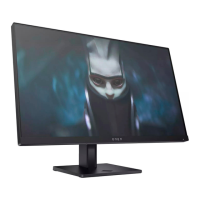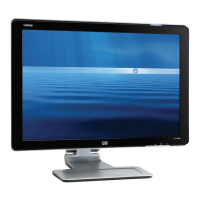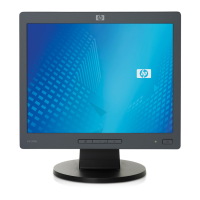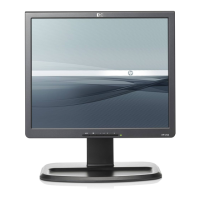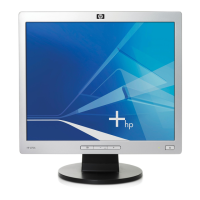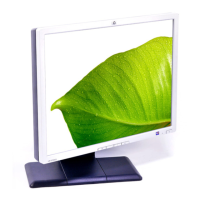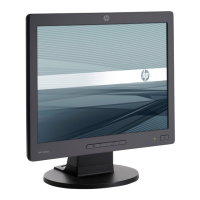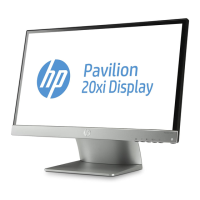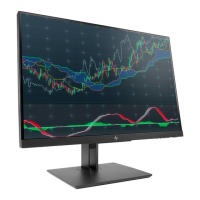
Do you have a question about the HP Mini-in-One 24 and is the answer not in the manual?
| 3D | No |
|---|---|
| Screen shape | Flat |
| Response time | 14 ms |
| Display diagonal | 23.8 \ |
| Display technology | LED |
| Native aspect ratio | 16:9 |
| Maximum refresh rate | 80 Hz |
| Contrast ratio (typical) | 1000:1 |
| Display number of colors | - |
| Display brightness (typical) | 250 cd/m² |
| HP segment | Business |
| Number of speakers | 2 |
| Tilt angle range | -5 - 30 ° |
| AC input voltage | 100 - 240 V |
| Power consumption (standby) | - W |
| USB hub version | 3.2 Gen 1 (3.1 Gen 1) |
| Certification | Australian-New Zealand MEPS; BSMI; CB; CCC; CE; CECP; CEL; CSA; EAC; Energy Star; FCC; ICES; ISO 9241-307; KC; KCC; NOM; PSB; SEPA; TCO Certified Edge; TUV; UL; VCCI; Vietnam MEPS; WEEE; ISC |
| Product color | Black |
| Country of origin | China |
| Sustainability certificates | EPEAT Silver |
| Operating temperature (T-T) | 5 - 35 °C |
| Operating relative humidity (H-H) | 20 - 80 % |
| Cables included | AC |
| Package depth | 473 mm |
| Package width | 650 mm |
| Package height | 315 mm |
| Package weight | 12780 g |
| Harmonized System (HS) code | 85285210 |
| Depth (with stand) | 242 mm |
|---|---|
| Height (with stand) | 503.8 mm |
| Depth (without stand) | 75 mm |
| Width (without stand) | 539.6 mm |
| Height (without stand) | 367.6 mm |
| Weight (without stand) | 7200 g |
This guide provides information about spare parts, removal and replacement of parts, diagnostic tests, problem troubleshooting, and more.
Read cautions and notes to minimize risk of personal injury. Proper service methods are important for safe operation.
Repair by professional technicians. End users should not perform procedures. Adherence to procedures and precautions is essential.
Details RoHS compliance requirements for products sold in the EU and other countries, including original and replacement parts.
This manual contains general information and describes two levels of service: cosmetic/alignment and circuit board/parts replacement.
Information on where to find firmware updates for the monitor on the HP support website.
Procedure to perform an AC leakage current check on exposed metallic parts to ensure safety before returning the product.
Details the monitor's features, including screen size, resolution, panel type, viewing angles, and adjustability.
Identifies and describes components on the front of the monitor, such as microphones, webcam, and power button.
Identifies and describes components on the sides of the monitor, including headset jack and USB 3.1 Gen1 ports.
Identifies and describes components on the rear of the monitor, including security slot, USB ports, and various connectors.
Details the location of the serial and product numbers on a barcode label on the bottom edge of the display head.
Provides an illustration and table identifying the monitor's major components by item number and description.
Lists EU distributors for connectors and provides part numbers for DisplayPort, USB, DC jack, and USB-C connectors.
Details steps to prepare for disassembly, including reading safety info, cleaning area, and gathering equipment.
Provides steps for removing the RC, starting with unscrewing the rear case and splitting the sides apart.
Details removing Mylar, screws, IO shielding, and small boards from the rear cover.
Outlines steps to remove the webcam module from the middle frame and the PCBA by releasing screws on the scaler board.
Describes removing speakers by releasing support brackets and removing the chassis, middle frame, and gasket.
Lists connector types and their general locations on the main and IO boards.
Shows images and identifies locations of connectors on the Main Board.
Shows images and identifies locations of connectors on the USB Side Board and Audio Board.
Provides steps for repairing the DP connector (CN5) using a hot air gun and soldering iron.
Details the repair process for the DC jack connector (CN1) using desoldering and soldering techniques.
Explains the repair of the USB upstream connector (P1) by desoldering and soldering a new component.
Covers repair of multiple USB connectors on the PCB, including desoldering, removal, and soldering.
Details the repair of the USB-C connector (P1) by heating the PCB, removing, and soldering a new component.
Outlines the repair procedure for the headphone connector (CN2) by heating the PCB and soldering a new component.
Describes tests for USB-C, DP, Audio, and USB ports to confirm correct operation after repair.
Lists common problems, their possible causes (e.g., power cord disconnected, display off), and recommended solutions.

